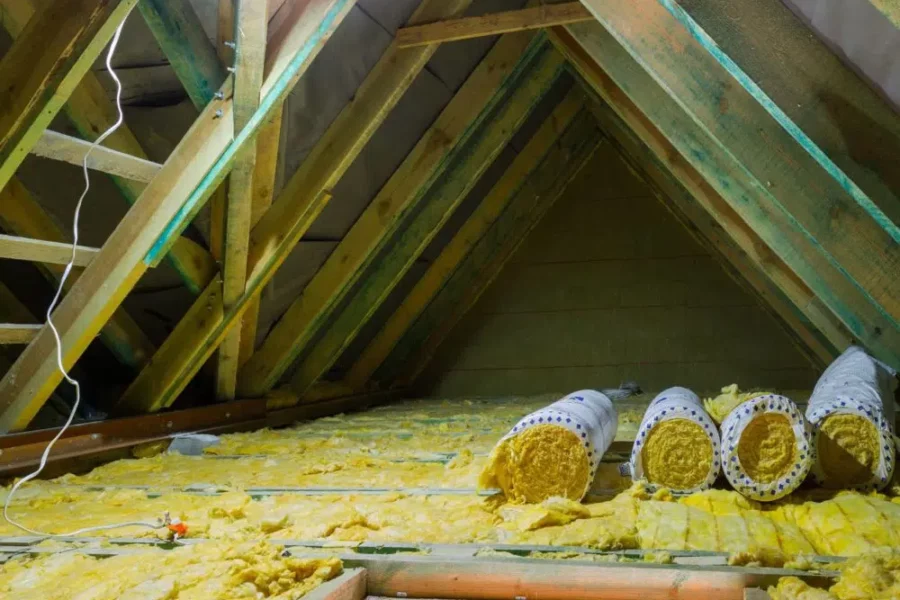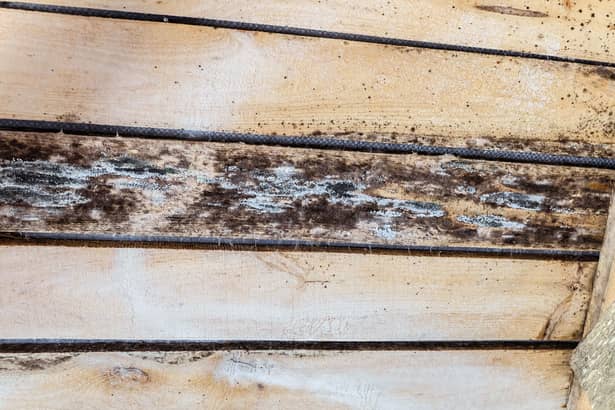
Tucked away above our heads, attic access is a feature many of us overlook until it’s in use. Imagine if, instead of an awkward, stark reminder of the space above, your attic door could hide seamlessly in the ceiling, enhancing the harmony of your home’s design. Now, get excited – it doesn’t have to remain a fantasy!
Whether you’re a seasoned DIY project pro or just curious, discovering how to hide your attic door artfully is a journey worth taking. Let’s dive into the options!
Why Hide Your Attic Door?
The appearance of an attic door is often a hard contrast to the other aesthetics going on in a space. Conversely, an attic door that you hide in the ceiling by integrating it with the room can significantly elevate the look of an interior. The lack of harsh contrast without the visible door can make ceilings appear cleaner and rooms more cohesive.
Beyond aesthetics, it’s also about optimizing space. A hidden door can transform a ceiling from a mere overhead boundary into an integral part of your home’s design.
Lastly, for those looking to sell, thoughtful details like this can intrigue potential buyers, subtly increasing your home’s appeal.

Options for Hiding an Attic Door in the Ceiling
When it comes to blending your attic door into the ceiling, the goal is to enhance your space without sacrificing function. Here’s a closer look at each option, helping you understand the benefits and considerations involved:
Painting and Decoration
- How: Apply paint that matches your ceiling to the attic door. Utilize textures or patterns that mimic the surrounding area for a more cohesive look. Decorative trims or moldings can also disguise edges, making the door less noticeable.
- Best For: Those seeking a simple, budget-friendly solution. Ideal for homes where the attic door has minimal protrusion from the ceiling.
- Considerations: Ensure the paint is durable and the texture aligns well with the rest of the ceiling. Consider future touch-ups as wear and tear become visible.
Flush-Mount Doors
- How: These doors are designed to fit perfectly flush with the ceiling surface, often featuring push-to-open mechanisms that negate the need for visible handles.
- Best For: Modern homes or renovations where a sleek, minimalistic appearance is desired. Also great for lower ceilings where every inch of perceived height matters.
- Considerations: Installation can be more complex, possibly requiring professional help. It’s crucial to ensure a perfect fit to achieve the desired seamless look.
Creative Cover-Ups
- How: Last but not least, this approach includes innovative solutions like retractable attic stairs or doors that double as decorative elements (think hidden panels or artwork).
- Best For: Homeowners looking for a custom solution that adds a unique element to their space. Ideal for those who appreciate creativity in home design.
- Considerations: These solutions can be more costly and may require custom work. It’s important to balance aesthetic desires with practical functionality.
Choose a Method and Get Prepared
Deciding on the best way to conceal your attic door involves assessing your needs, capabilities, and your space. Here’s how to choose your method:
- Evaluate Your Space and Needs: Consider the size of your attic door, the height of your ceiling, and the overall style of your home. If your ceiling is low, a flush-mount door might help maintain a sense of height. For those with decorative ceilings, painting, and decoration could be the way to go.
- Consider Your DIY Skills: Assess your comfort level with DIY projects. Painting and basic decoration might be within reach for many, but installing a flush-mount door or creating a custom cover-up could require advanced skills or professional assistance.
- Budget: Have a clear understanding of your budget. Painting and decoration are cost-effective, whereas flush-mount solutions and creative cover-ups might involve a higher investment.
Preparing for Installation
First, collect the necessary supplies for your chosen door. For a painting project, this might include paint that matches your ceiling, a sturdy ladder, paint rollers or brushes, and protective sheets to cover the floor.
Similarly, if you’re installing a flush-mount door, your list should feature the door kit itself, a drill, screws, a level, and possibly a joint compound to smooth out any seams. Then, make sure not to skip these steps:
- Plan the Project: For painting, choose a dry day and protect the surrounding area from spills. If installing a new door, precise measurements and possibly structural adjustments are crucial.
- Safety First: Before anything, ensure any ladders or scaffolding used are secure. If you’re unsure about electrical wiring or structural changes, consulting a professional is wise. Don’t forget safety equipment to protect against dust and injuries!

Recommended Maintenance
Maintaining your hidden attic door ensures it remains functional and nice to look at. Here’s how to stay on top:
- Inspect Regularly: Twice a year, check the attic door for any signs of wear or damage. Look out for issues like peeling paint, loose hinges, or difficulty in opening and closing.
- Clean Gently: Dust and clean the door and its surrounding area to prevent buildup. For painted doors, use a soft cloth and a mild cleaner that won’t strip the paint.
- Touch-Up Paint: If you’ve chosen to paint your attic door, keep some extra paint for touch-ups. This is especially useful after cleaning or repairing any minor damage.
- Lubricate Moving Parts: For doors with hinges or retractable stairs, apply a silicone-based lubricant to keep movements smooth and prevent squeaking.
When to Call a Professional
If the vision you have to hide your attic door in the ceiling involves major structural changes to your home, involving a professional is the safest option. Projects like installing flush-mount doors or undertaking custom cover-ups might look straightforward, but never hesitate to call for an expert.
Moreover, any electrical components near your attic door necessitate an electrician’s touch. Electrical work, when done incorrectly, poses significant risks. A professional can safely integrate any lighting or electrical systems without compromising your home’s safety.
Conclusion
In summary, taking your attic door from a noticeable afterthought into a seamless part of your home’s design is very possible, and you have more options than you may have realized!
Whether you opt for a simple paint job, a flush-mount door, or a creative custom solution, the key is choosing the right method for your space, skills, and budget. If you’d like an expert’s eyes on the attic before starting on your project or need to schedule a complete home inspection, you’re in the right place. Don’t hesitate to reach out to Waypoint Property Inspection in Tampa, St. Petersburg, Lakeland, Orlando, Palm Beach, Ft. Lauderdale, and surrounding areas.


